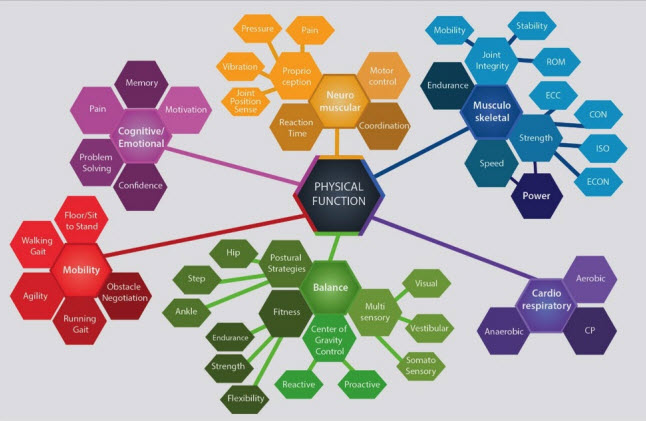Search the term “geroplasticity” in Google and the only result you are likely to find is this blog post. I know because I have searched for this term several times over the past few months and have never gotten even one result. It is time we changed that and made “geroplasticity” a normal part of our professional conversation regarding exercise training for mature adults.
I am sure you are familiar with the term “neuroplasticity” which refers to the process in which your brain’s neural synapses and pathways are altered as an effect of environmental, behavioral, and neural changes. The growing evidence from neuroscience research has shown that even in advanced old age the bring maintains its ability to get better. The old saying “you can’t teach an old dog new tricks” is unequivocally wrong.
Geroplasticity (aka aging plasticity) refers to the body’s ability to continue to adapt and grow in late life as an effect of environmental and behavioral changes. It is why we do what we do so effectively. The body is able to positively respond to healthy behavioral stimuli such as exercise and nutrition even in advanced old age. The old adage “it’s never too late” is certainly true in this regard.
Study after study consistently proves that the aging body is still a resilient body. The biological process of aging marches on BUT most of the physical declines we experience – loss of muscle mass and bone density, disrupted metabolism, etc. – are due to the accumulation of behaviors and choices that we make every single day (an accumulation effect more so than an aging effect).
Of course, some physiological systems are much more responsive to behavioral stimuli (e.g. exercise). I’m no expert in all systems but I wouldn’t think our hair, auditory or integumentary (skin) systems are really “trainable”. The good news is that the neuromuscular and balance systems are highly responsive to exercise. Even people in their 90’s and 100’s can get stronger, faster, more powerful and have better balance (just to name a few) as a result of proper exercise training.
The concept of specificity states that these systems respond according to the manner in which they are trained. Or, as I like to say, “how you train is how you gain”. This same concept applies to the older adult as well. Just as the brain responds better to different types of stimuli so does the rest of the body’s systems. It is why the approach of the Functional Aging Training Model is to address each of the primary “functional” systems within a training program for mature adults. It is the best way to take advantage of the concept of geroplasticity and to get the most out of your training efforts.
It is also a great way to become a Category of One Business. Using new, intriguing terminology like geroplasticity is a great way to communicate to potential clients that you are different. It allows you to defy comparison and make competitors irrelevant. You aren’t just a personal trainer you are a Functional Aging Specialist. Your training doesn’t just make clients fitter it harnesses the power of geroplasticity to improve functional ability and performance at any age. The aging Boomers are attracted to professionals who are the best at helping them. They always want to know What’s In It For Me (WIIFM) even if they don’t verbalize it.
Maybe we should change our name to the Institute of Geroplasticity (okay, maybe not).
Cody Sipe, PhD; Geroplasticity Expert:)





